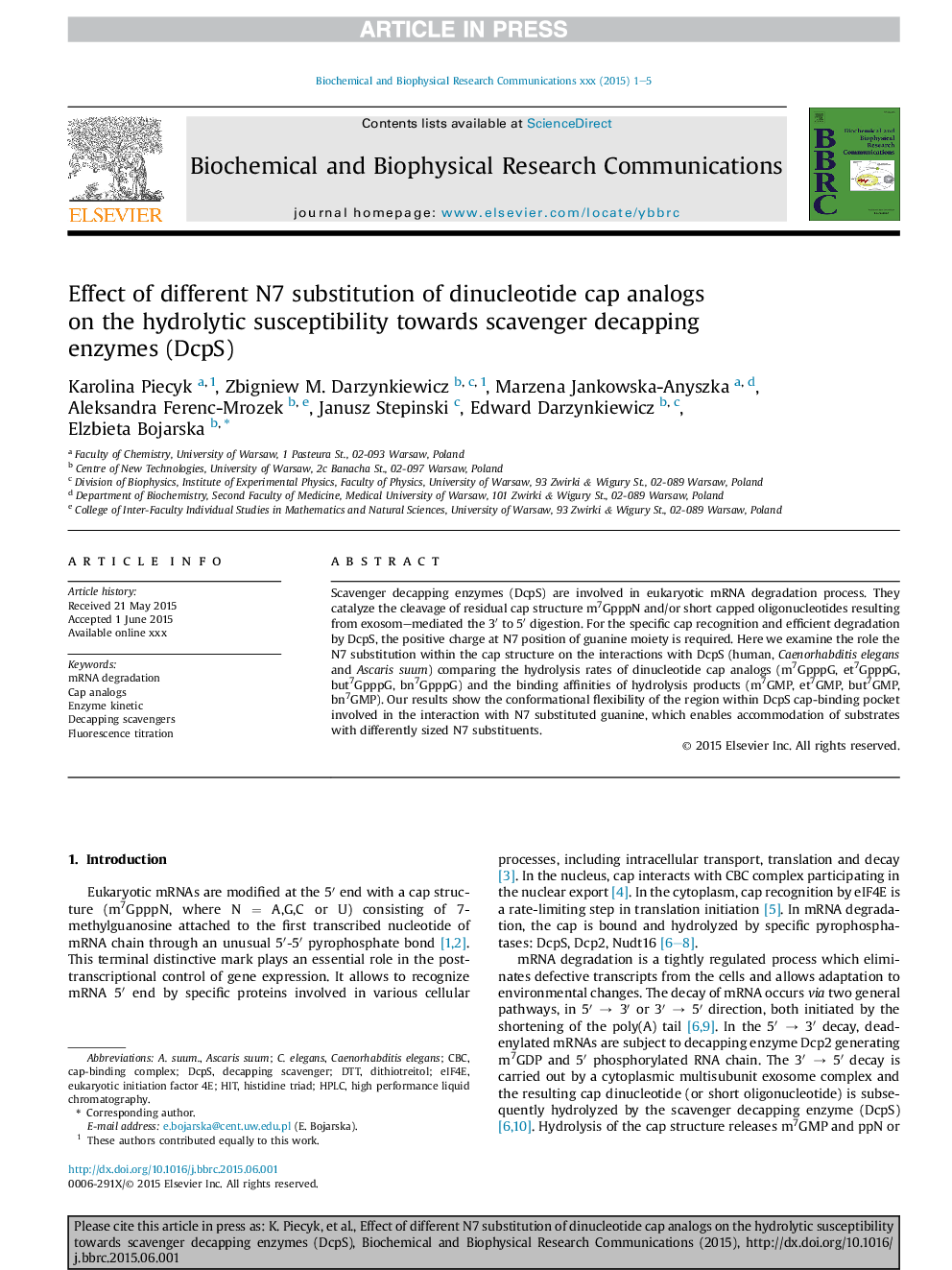| Article ID | Journal | Published Year | Pages | File Type |
|---|---|---|---|---|
| 10751736 | Biochemical and Biophysical Research Communications | 2015 | 5 Pages |
Abstract
Scavenger decapping enzymes (DcpS) are involved in eukaryotic mRNA degradation process. They catalyze the cleavage of residual cap structure m7GpppN and/or short capped oligonucleotides resulting from exosom-mediated the 3â² to 5â² digestion. For the specific cap recognition and efficient degradation by DcpS, the positive charge at N7 position of guanine moiety is required. Here we examine the role the N7 substitution within the cap structure on the interactions with DcpS (human, Caenorhabditis elegans and Ascaris suum) comparing the hydrolysis rates of dinucleotide cap analogs (m7GpppG, et7GpppG, but7GpppG, bn7GpppG) and the binding affinities of hydrolysis products (m7GMP, et7GMP, but7GMP, bn7GMP). Our results show the conformational flexibility of the region within DcpS cap-binding pocket involved in the interaction with N7 substituted guanine, which enables accommodation of substrates with differently sized N7 substituents.
Keywords
Related Topics
Life Sciences
Biochemistry, Genetics and Molecular Biology
Biochemistry
Authors
Karolina Piecyk, Zbigniew M. Darzynkiewicz, Marzena Jankowska-Anyszka, Aleksandra Ferenc-Mrozek, Janusz Stepinski, Edward Darzynkiewicz, Elzbieta Bojarska,
